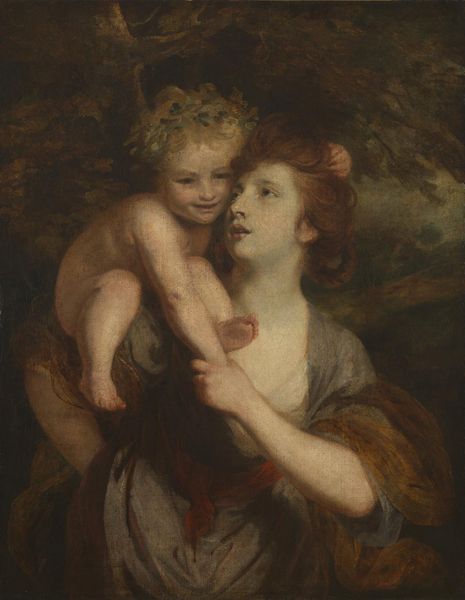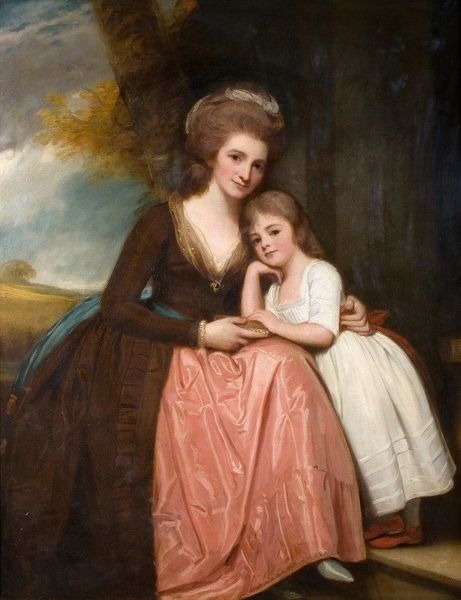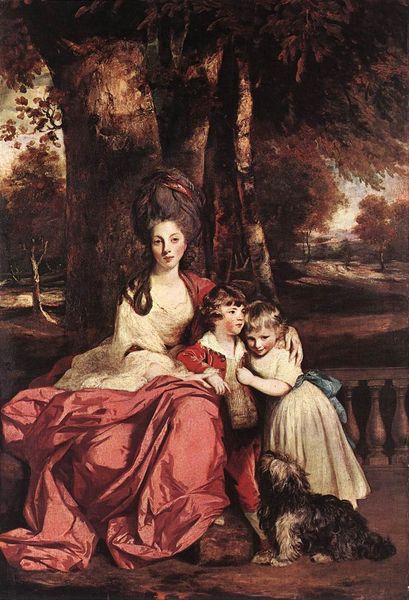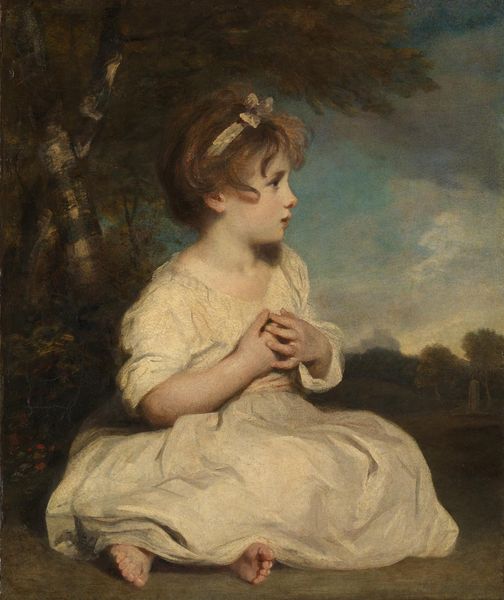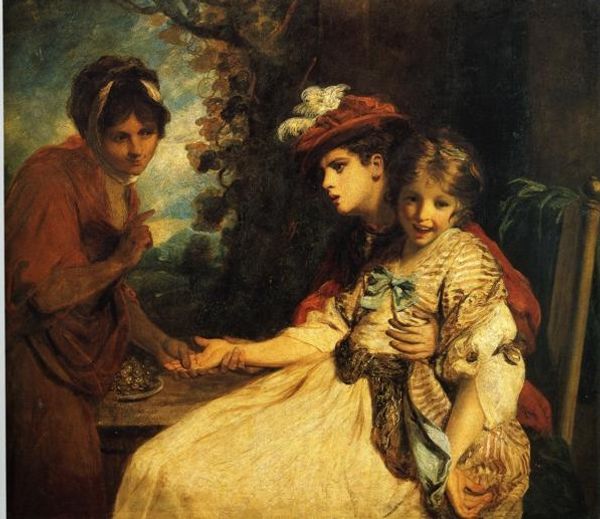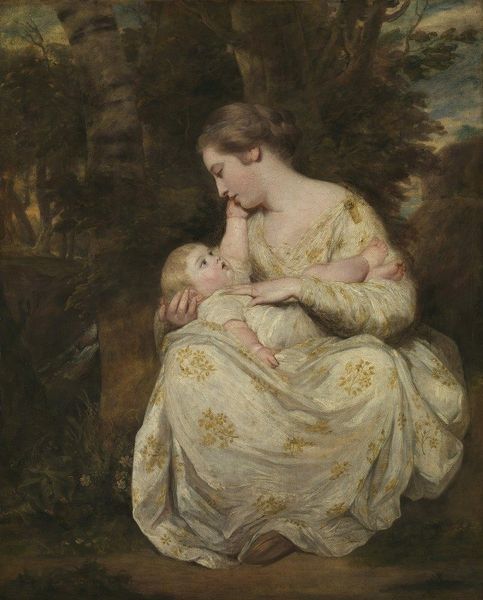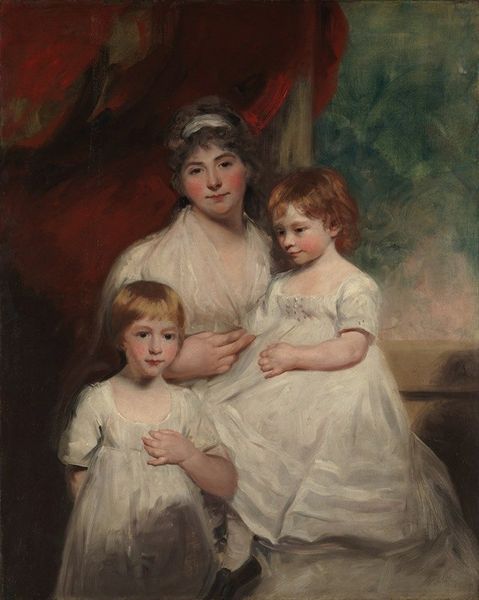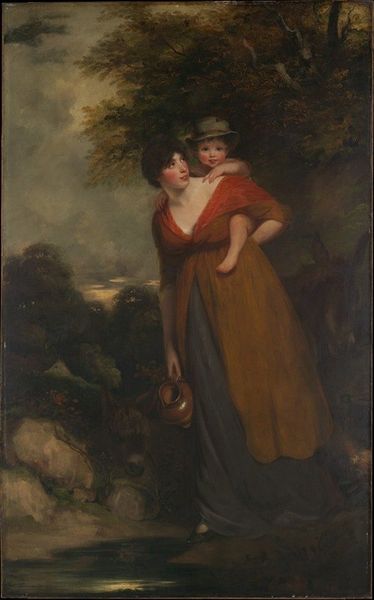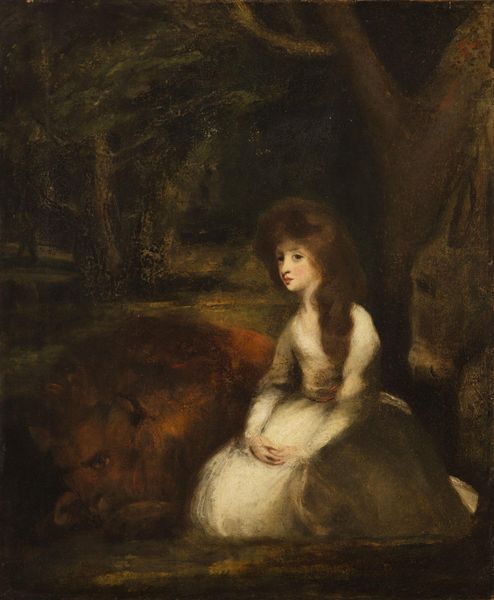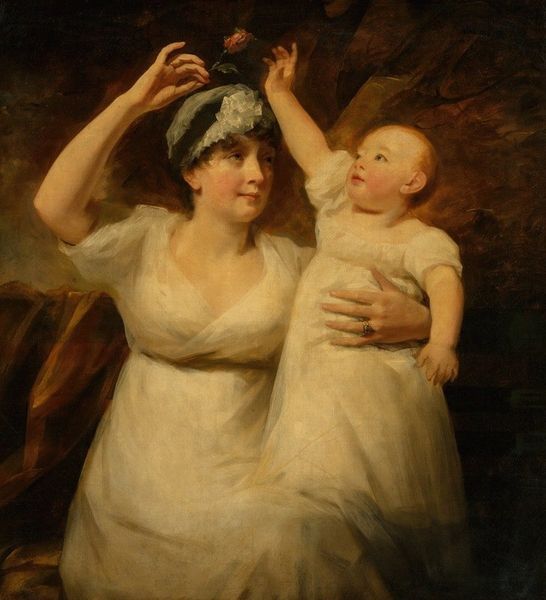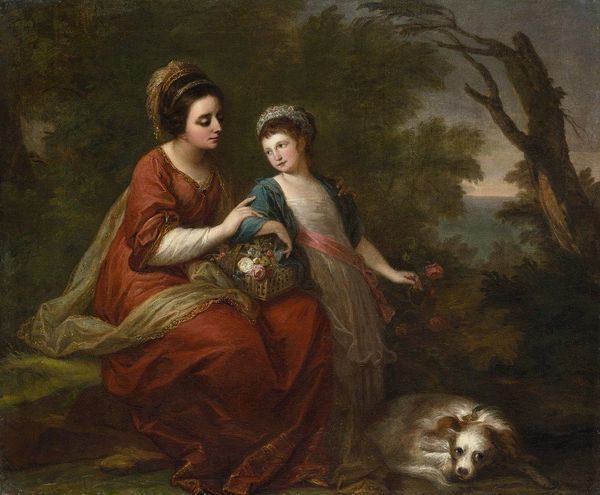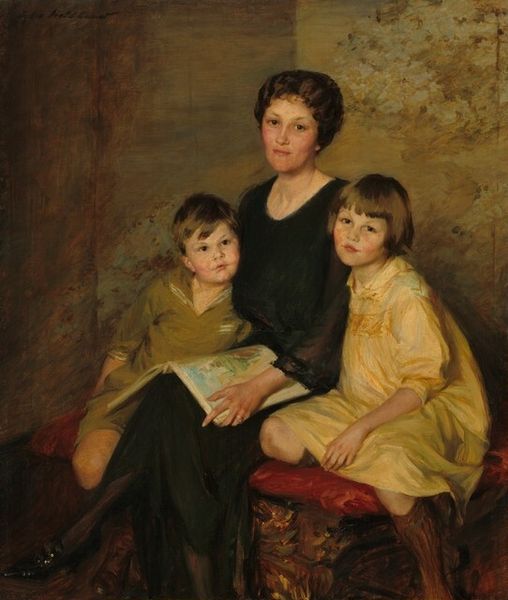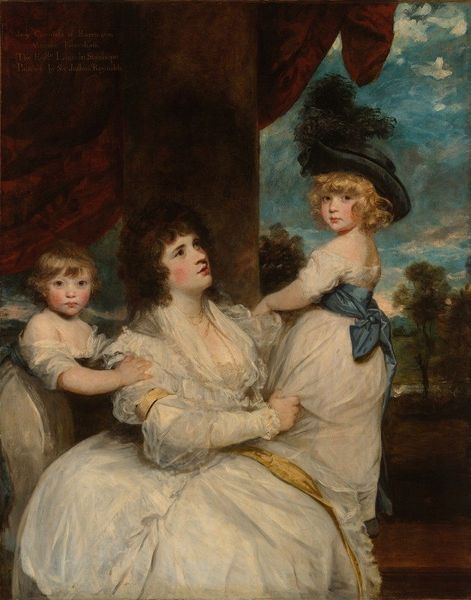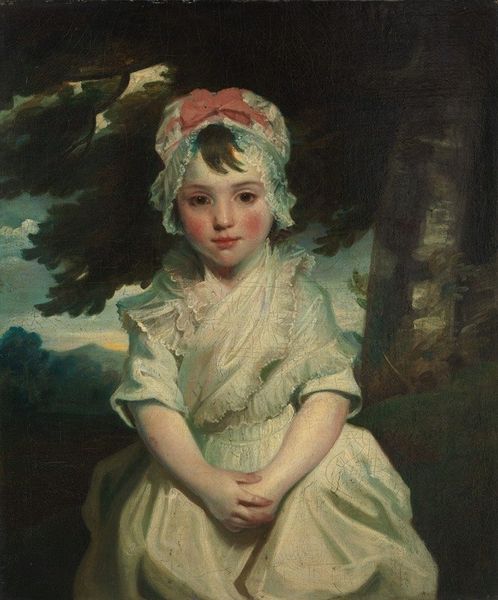
oil-paint
#
portrait
#
figurative
#
oil-paint
#
figuration
#
oil painting
#
romanticism
#
genre-painting
Copyright: Public Domain: Artvee
Curator: Standing before us is "The Countess of Darnley and her Daughter, Lady Elizabeth Bligh," a piece painted around 1795 by John Hoppner, rendered beautifully with oil on canvas. Editor: It’s striking, this painting. The Countess gazes off into the distance, while her daughter regards us with these wonderfully innocent eyes. There’s a softness, an intimacy… almost a secret shared. Curator: That intimacy is certainly key. Hoppner was known for these types of portraits capturing women and children within landscapes, playing into the ideals of domesticity and sentimentality so popular at the time. It's important to remember who these images were for; a glimpse into aristocratic life. Editor: I can almost feel the grass beneath their feet and the warm breeze—despite the clear class division being presented, nature gives it an idealized almost timeless quality. Notice how their bodies and dresses blend right into that mossy outcrop; it feels as if she is an earth goddess. Curator: It’s the loose brushwork and almost palpable textures which elevate it, right? It doesn't possess the austerity of earlier formal portraits, and its visual energy lies more in this very painterly depiction and the tender connection between the mother and child. These artists tapped into this vogue for feeling which also became this form of public expression through these paintings. Editor: Absolutely. And there's a cleverness in how Hoppner handles the light, creating an almost dreamlike haze. Everything feels gentle, yet there's strength in their presence as if he wants to give you a taste of both worlds through their image. I mean, to be seen and celebrated for the maternal relationship rather than political maneuvering! Curator: These images also performed other work though – helping create lasting political dynasties! Here's the visual lineage; this romantic celebration of mothers and children also becomes the mechanism through which bloodlines and future heirs become publically and aesthetically available for mass viewership. Editor: That’s a keen insight – so much history is wrapped into something so apparently gentle and natural. It does go to show that beauty and power are often much closer companions than we tend to think. Curator: Exactly. Looking closer challenges how the power of aristocratic motherhood shaped the visual narratives and legacy they cultivated through paintings like these. Editor: Yes, leaving us both soothed and pondering about what we think and assume of those lives that time has long swept into the corners of memory.
Comments
No comments
Be the first to comment and join the conversation on the ultimate creative platform.
